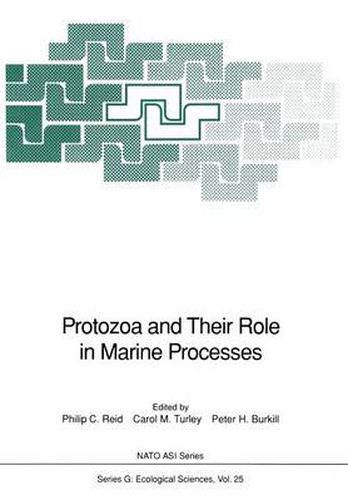Readings Newsletter
Become a Readings Member to make your shopping experience even easier.
Sign in or sign up for free!
You’re not far away from qualifying for FREE standard shipping within Australia
You’ve qualified for FREE standard shipping within Australia
The cart is loading…






This title is printed to order. This book may have been self-published. If so, we cannot guarantee the quality of the content. In the main most books will have gone through the editing process however some may not. We therefore suggest that you be aware of this before ordering this book. If in doubt check either the author or publisher’s details as we are unable to accept any returns unless they are faulty. Please contact us if you have any questions.
In the summer of 1988, under NATO sponsorship, approximately 80 scientists lived and worked together in Plymouth for two weeks to evaluate the ecological role of protozoa in the sea. Through the convivial surroundings, close working conditions and special facilities that had been brought together for NATO ASI 604/87 a ‘melting pot’ of ideas was formed, which stimulated the multidisciplinary creativity which is expressed in this book and in a second series of papers which will be published in Marine Microbial Food Webs under the title - Protozoa and their Role in Marine Microbial Food Webs . Discussions of the role of protozoa in the microbial food web, in the cycling of carbon and nitrogen and the extent to which this web acts as a link or sink to metazoa in the water column were major themes of the ASI. Structured sessions covering oral and poster presentations, field work, model 1 ing, laboratory practicals and demonstrations of techniques such as image analysis and flow cytometry, formed the core of the meeting. Participants took part enthusiastically in the practical sessions developing new concepts and obtaining new insights into their work. The practicals included a ‘protozoo’ and some beautiful films and videos. Field excursions were made to a range of sites including a unique marine sewage farm at Looe in Cornwall, (Jones this volume). Interactive workshops allowed scientists with no modelling experience to input their results to three simulation models and a flow analysis package.
$9.00 standard shipping within Australia
FREE standard shipping within Australia for orders over $100.00
Express & International shipping calculated at checkout
This title is printed to order. This book may have been self-published. If so, we cannot guarantee the quality of the content. In the main most books will have gone through the editing process however some may not. We therefore suggest that you be aware of this before ordering this book. If in doubt check either the author or publisher’s details as we are unable to accept any returns unless they are faulty. Please contact us if you have any questions.
In the summer of 1988, under NATO sponsorship, approximately 80 scientists lived and worked together in Plymouth for two weeks to evaluate the ecological role of protozoa in the sea. Through the convivial surroundings, close working conditions and special facilities that had been brought together for NATO ASI 604/87 a ‘melting pot’ of ideas was formed, which stimulated the multidisciplinary creativity which is expressed in this book and in a second series of papers which will be published in Marine Microbial Food Webs under the title - Protozoa and their Role in Marine Microbial Food Webs . Discussions of the role of protozoa in the microbial food web, in the cycling of carbon and nitrogen and the extent to which this web acts as a link or sink to metazoa in the water column were major themes of the ASI. Structured sessions covering oral and poster presentations, field work, model 1 ing, laboratory practicals and demonstrations of techniques such as image analysis and flow cytometry, formed the core of the meeting. Participants took part enthusiastically in the practical sessions developing new concepts and obtaining new insights into their work. The practicals included a ‘protozoo’ and some beautiful films and videos. Field excursions were made to a range of sites including a unique marine sewage farm at Looe in Cornwall, (Jones this volume). Interactive workshops allowed scientists with no modelling experience to input their results to three simulation models and a flow analysis package.